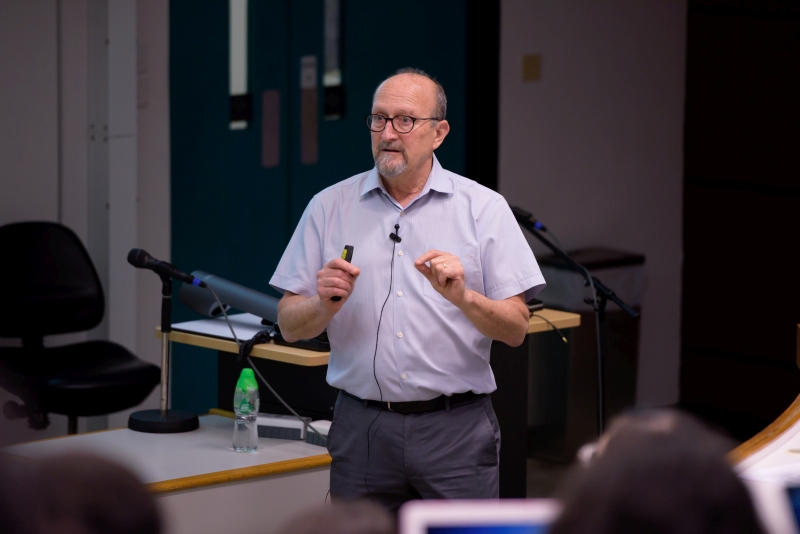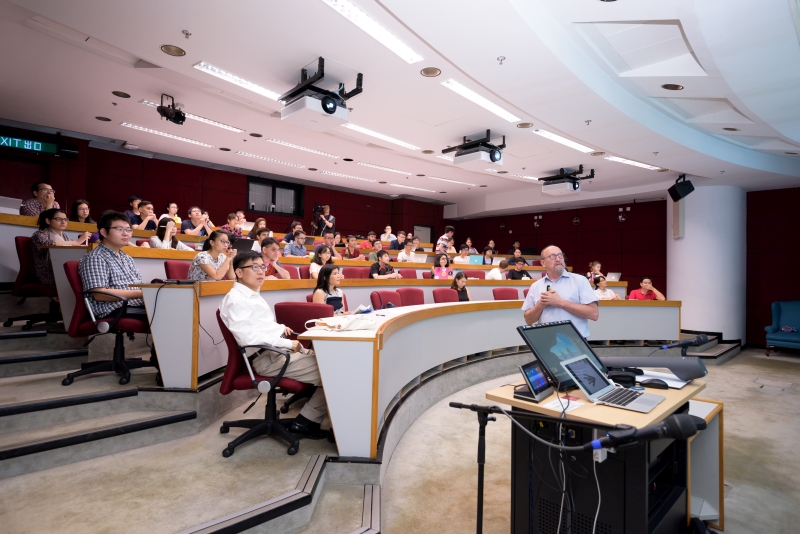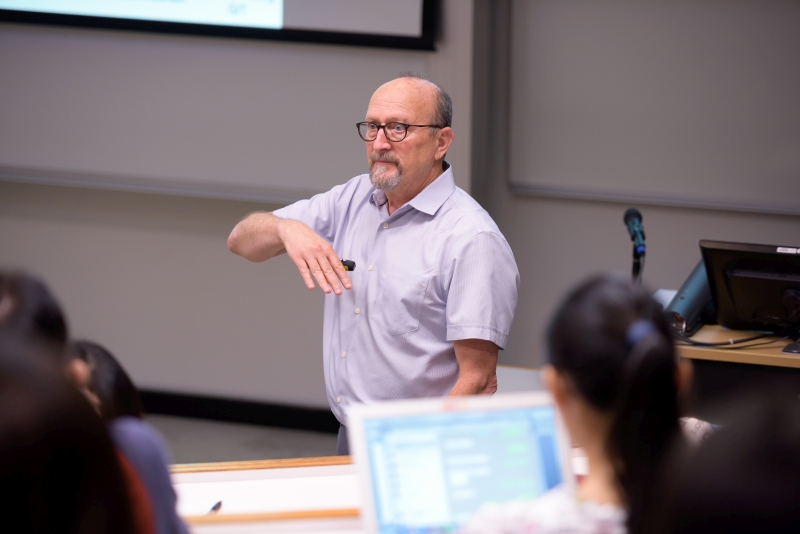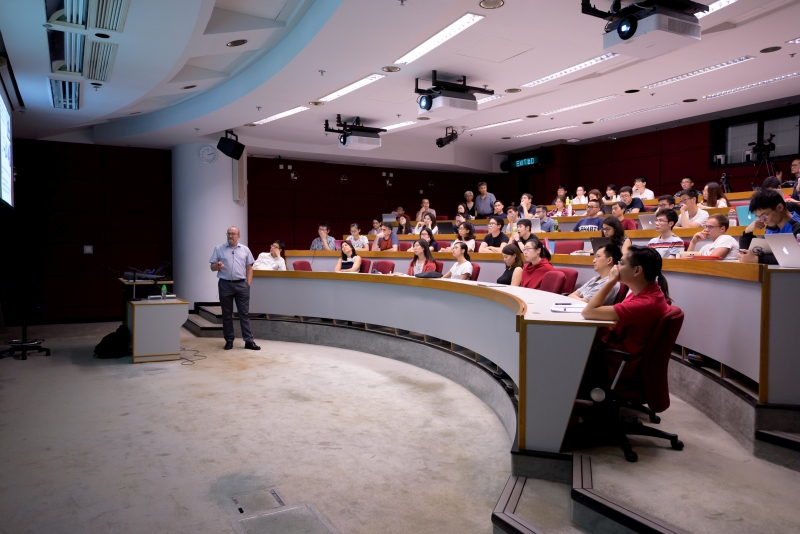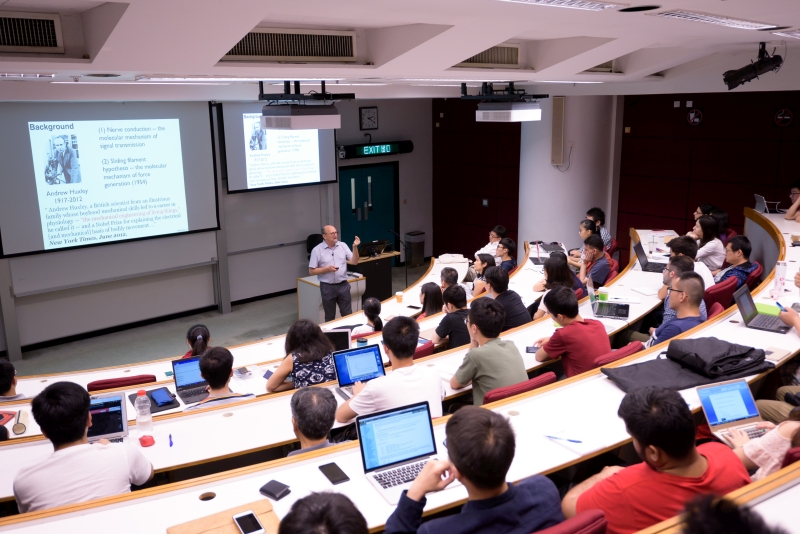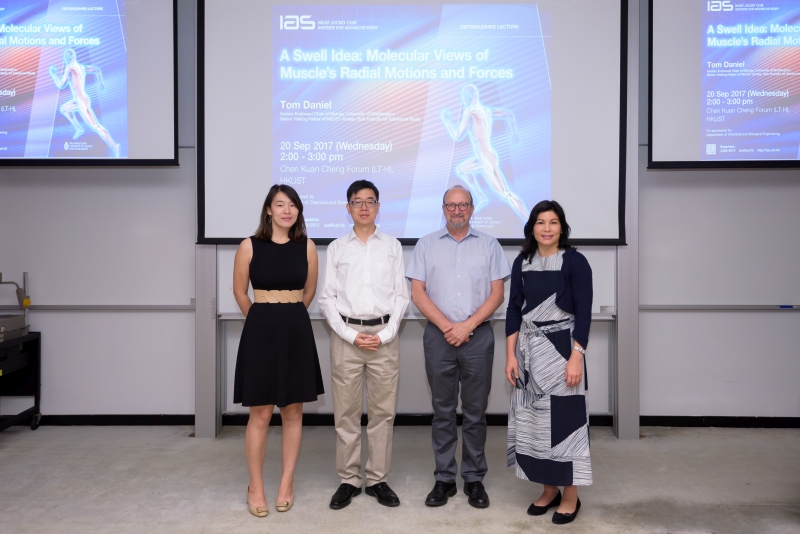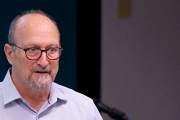A Swell Idea: Molecular Views of Muscle’s Radial Motions and Forces
Abstract
Muscle contraction is accompanied by a sliding motion between thick filaments bearing myosin motor molecules and the thin filaments to which they attach and generate force. Those motor molecules derive energy from adenosine triphosphate (ATP) as their power movement. However, as the thin filaments slide during contraction, and the z-disks, to which they attach, are pulled together. Mass conservation suggests that either (1) fluid in the space surrounding the filaments is squeezed out; (2) the filaments expand radially so as to mitigate significant mass flux and shearing by conserving the lattice volume; or (3) radial filament motions are influenced by active cross-bridges so that neither constant volume nor constant lattice spacing conditions apply to natural motions. To understand these processes in the context of functioning active muscles, the speaker used time-resolved x-ray diffraction to resolve the temporal pattern of protein motions in living muscle cells.
In this lecture, the speaker will show that there are significant radial changes in the spacing of the filament lattice. Moreover, the spacing changes depend on the timing of activation of motor molecules undergoing oscillatory contraction. Intriguingly, the lattice of contractile filaments behaves neither as constant volume, nor as a constant spacing material. Instead it behaves as a complex material with a time-dependent Poisson's ratio. The volume changes of the lattice have two important implications. First, they will likely drive viscous stresses associated flows and could incur energetic costs and influence relationships between muscle force production, length and shortening velocity. Secondly, however, because diffusion could be limiting, volume changes could provide a mechanism for delivering energy to the motor molecules.
About the speaker
Prof. Tom Daniel received his BS and MS from University of Wisconsin and his PhD from Duke University. He has been a faculty member in the University of Washington (UW) since his initial appointment in 1984 and was the founding chair of the Department of Biology at UW from 2000 to 2008. Prior to joining UW, he was the Bantrell Postdoctoral Fellow in Engineering Sciences at the California Institute of Technology. He is currently the Komen Endowed Chair of Biology, Professor of Neurobiology and Behavior, Adjunct Professor of Bioengineering, and of Computer Science and Engineering. He is also the co-Director of the UW Institute of Neuroengineering and the Director of the Air Force Center of Excellence on Nature-Inspired Flight Technologies.
Prof. Daniel’s research programs focuses on biomechanics and sensory systems, particularly on neurons and neuronal networks. He and his team strive to address questions about the physics, engineering and neural control of movement in biology. Prof. Daniel has been involved in editorials for a number of renowned academic journals, such as Science, PLoS Computational Biology, and Biology Letters.
Prof. Daniel has been recognized for his scholarly contribution by a number of honors, including the Guggenheim Fellowship (2013), the MacArthur Fellowship (also known as the "Genius Award”) (1996-2001), and a number of teaching awards at UW. He has been a Fellow of the American Association for the Advancement of Science (since 2012) and serves also on the Board of Directors (since 2011) and the Scientific Advisory Board (since 2006) of the Allen Institute of Brain Science.

